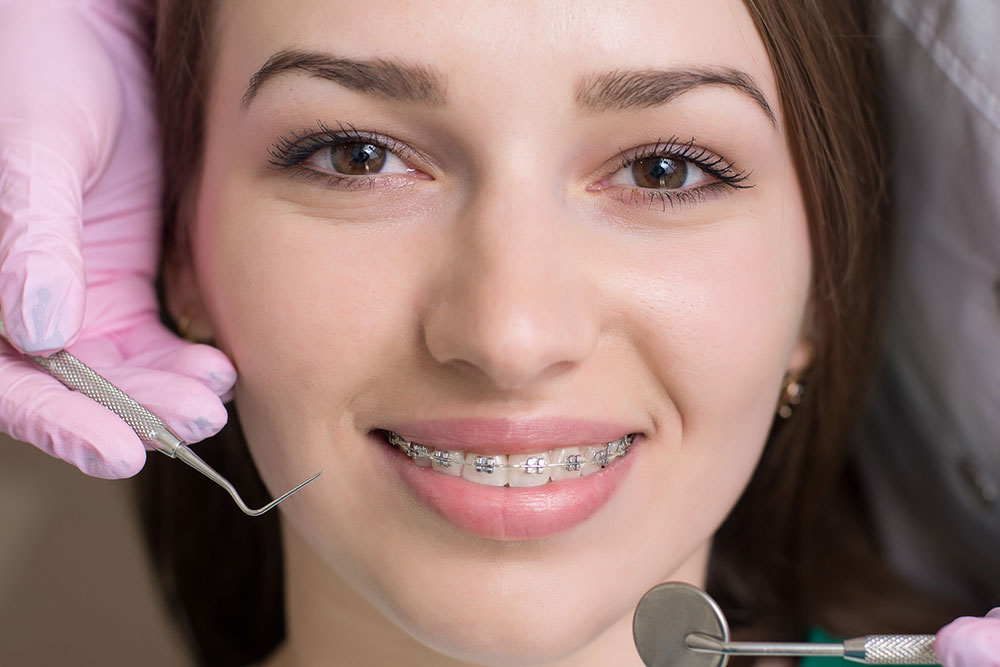
Dental braces – Types, procedure, and cost
Dental braces are orthodontic tools made of materials like ceramic, plastic, or metal. They help correct dental issues like malocclusion, crowding, and gapped or crooked teeth. These issues can not only affect the appearance of a smile, but they can also make speaking and chewing difficult. So, dental braces can help restore the health and functionality of teeth and improve their appearance over time. Here is all one should know about braces:
Types
One can choose from various types of dental braces today. Factors like the severity of teeth misalignment, budget and comfort of the user, and visibility and durability of the braces often influence the decision here. The most common types of braces are:
Metal braces
Traditional metal braces, the most common type on this list, can correct issues like overcrowding, misalignment, malocclusion, and cleft lip or palate. Here, metal brackets are glued to the teeth, and a thin metal wire is placed over the brackets. The wire is kept in place with elastic bands called ligatures. The pressure exerted by the braces helps the teeth move toward the desired position. Metal braces require regular follow-ups and thorough cleanup. They are cheaper than some of the other types on the list but are more noticeable.
Ceramic braces
Ceramic braces are like metal braces when it comes to function and design. However, as ceramic variants are similar in color to teeth, they are less noticeable than traditional braces.
Self-ligating braces
Elastic bands help hold the wires in place for metal and ceramic braces. For self-ligating braces, clips are used. This type of braces is easier to clean than rubber bands.
Lingual braces
Braces placed on the inside of the teeth are called lingual braces. Although they are invisible to onlookers, they can take longer than traditional braces to show similar results. Lingual braces are also difficult to clean and can cause irritation as they come in direct contact with the tongue.
Clear aligners
Invisible plastic aligners are the latest innovation in braces. This tool does not come with wires or brackets and is custom-made in clear plastic, making it almost invisible to onlookers. On average, 18 to 30 sets of aligners may be required to correct dental issues. The aligners can be easily removed, say while eating, brushing teeth, or drinking. This type is ideal for correcting mild to moderate dental issues.
Procedure for getting braces
A primary physician may ask one to see an orthodontist if they notice issues like overcrowding or malocclusion. Alternatively, such issues may be detected in routine dental checkups. Here is what one can expect
Initial consultation: The orthodontist will conduct a careful physical examination, dental history check, and X-ray imaging for a clearer understanding of the issues. Based on the analysis, they may recommend dental braces and discuss the treatment duration and available options. Then, they may schedule the placement of braces.
Fitting the braces: During the scheduled appointment, the orthodontist polishes the teeth, uses dental cement to fix the brackets in the teeth, and fixes the wires in place. The entire procedure may take about 20 to 30 minutes. Following this, the doctor may discuss dos and don’ts when it comes to maintaining oral hygiene with braces. They will also schedule follow-ups to check the progress and see if the wires need to be repositioned or adjusted. During the follow-ups, the dentist will replace old elastic bands with new ones. The treatment will continue until the orthodontist believes they have achieved the desired outcome.
After getting braces, if one experiences excessive pain or the brackets fall off, they should consult the orthodontist immediately.
Cost
- Traditional metal braces can cost anywhere between $3,000 and $7,000
- Self-ligating braces may cost between $3,500 and $8,500
- Ceramic braces cost anywhere from $4,000 to $8,000
- Lingual braces are priced at $8,000 to $10,000
- Clear braces can cost anywhere between $4,000 to $9,000
The overall cost can vary based on the severity of dental issues, the location of the clinic, and insurance coverage, among other factors.
Pros and cons
Pros: Dental braces can completely align teeth, helping improve the smile and address dental issues. Other advantages of braces are:
- They reduce the risk of bacterial infection caused by gapped or crooked teeth
- They reduce the risk of oral diseases and complications associated with dental issues
- They help improve oral health
Cons: One may have to wear braces for up to three years to see results. Some other drawbacks of dental braces are:
- They can be painful
- They can cause temporary eating and speaking difficulties initially
- They can cause cuts inside the cheek
- They are difficult to clean and maintain
- They can be expensive
- Certain braces are visible and can make one feel conscious about their appearance.
- One may have to avoid crunchy, sticky, and hard foods with metal braces
- They require frequent visits to the dentist




